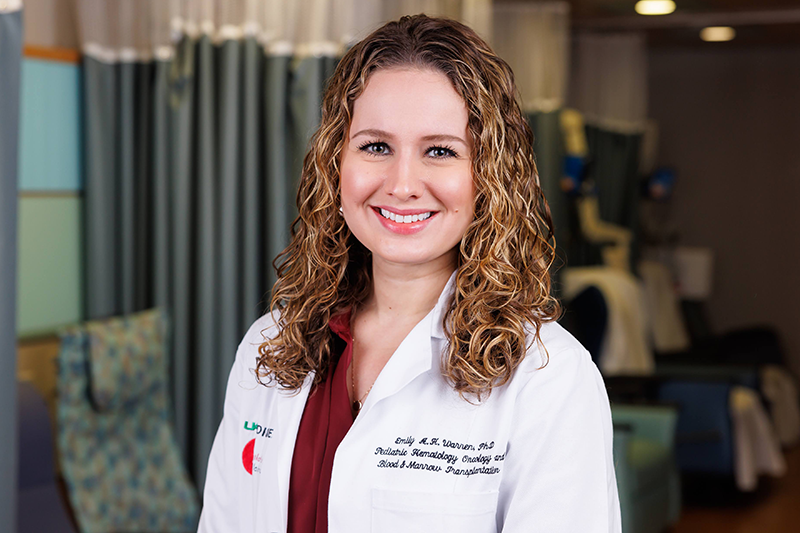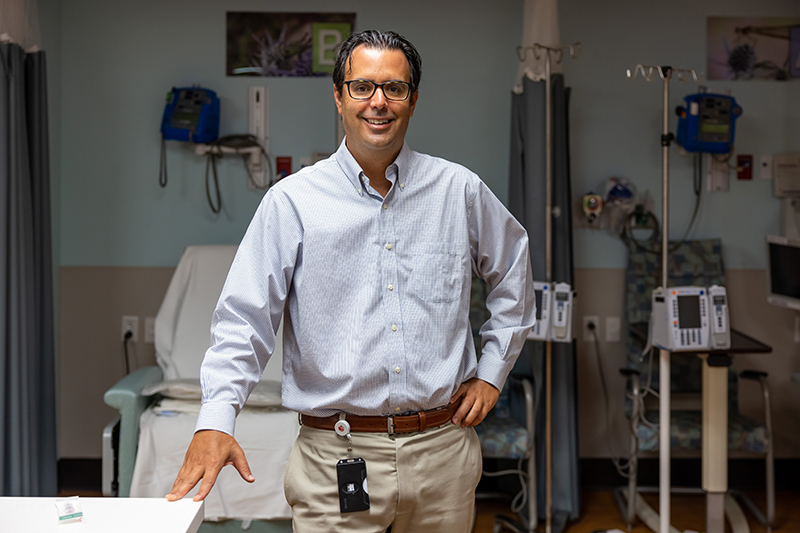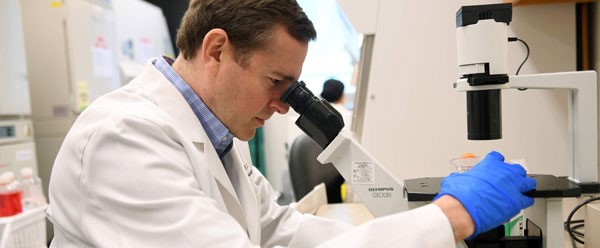
Left to right, Katie Metrock, M.D., Hilary Haines, M.D., and Kimberly Whelan, M.D. All are pediatric oncologists at Children’s of Alabama and faculty members in the Division of Pediatric Hematology/Oncology in the University of Alabama at Birmingham Department of Pediatrics.
Every year, two pediatric residents are accepted to Children’s of Alabama’s three-year, ACGME-accredited program. Their first year is a whirlwind of rotations through the inpatient, stem cell transplant, and outpatient clinics, said Kimberly F. Whelan, M.D., who completed the fellowship herself and now directs the program. “I think of it as being a very rewarding but steep learning curve year,” she said. In the second and third years, the fellows develop an area of research or scholarly focus that serves as the foundation for their first faculty position.
“We send our fellows out to institutions all across the country,” Dr. Whelan said. “And as that number has grown, it’s been wonderful to see the opportunities for networking and collaboration and the impact our fellows are having on the field — not only here in Birmingham, but across the country.”
The program typically gets about 40 applicants a year and interviews between 20 and 25. With COVID, of course, interviews have gone virtual, which has pros and cons, Dr. Whelan said. “The upside is it’s more convenient for the applicants since they don’t have to take as much time off to travel. And in the virtual interview you’re able to talk with them and get a good sense of what their interest is, where their passion lies, what they’re looking for in the program.”
The downside, however, “is that we don’t get to show off Birmingham and the beautiful Children’s of Alabama, which is such a wonderful institution.”
Recently, the Hematology/Oncology Program added two additional fellowships for hematology/oncology fellowship graduates who want additional training: one in bone marrow transplantation and one in neuro-oncology.
Bone Marrow Transplant Fellowship
While hematology/oncology fellows receive training in bone marrow transplant, the field has become very subspecialized, requiring specialized education, said Hilary Haines, M.D., who directs the bone marrow transplant fellowship. “The field as a whole is moving away from general hematology/oncology [and] into subspecialities, so the need to have dedicated training in these fields is definitely evolving,” she said.
That’s why the division created the one-year fellowship program focused entirely on bone marrow transplantation. It’s one that interests many hematology/oncology fellows, said Dr. Haines, given the complexity of the field. “You get to care for a variety of patients and be involved with cutting-edge technology and new therapies.”
Indeed, bone marrow transplants are not just for blood cancers. Today they are an option — even a cure — for other blood disorders like sickle cell anemia and severe combined immunodeficiency, bone marrow failure, and some neurological diseases. “We’ve identified more diseases that are curable via bone marrow transplant, and our outcomes have improved for the procedure, so we’re more willing to pursue transplant for diseases that we may not have in the past,” Dr. Haines said.
Several large children’s hospitals already offer bone marrow transplant fellowships, she said, so having the option at Children’s of Alabama serves as a good recruitment tool for hematology/oncology fellows who may eventually want to focus on bone marrow transplantation.
The first participant, who completed her hematology/oncology fellowship at Children’s, should finish her training in May.
Neuro-oncology Fellowship
Like Dr. Haines, Children’s neuro-oncologist Katie Metrock, M.D., points to the continued subspecialization in hematology/oncology as the reason for the new, one-year neuro-oncology fellowship she just launched. “The year is meant to submerge you into the field of neuro-oncology,” she said, which is vastly different from hematology/oncology overall. “Fellows get significant exposure to leukemia and lymphoma and other solid tumors during the general hematology/oncology fellowship, but not as much in-depth experience with neuro-oncology because the program operates slightly differently,” she said.
Since patients often require comprehensive care from multiple medical specialties, the extra year is designed to enhance a fellow’s knowledge of pediatric brain tumors, including diagnosis, biology, clinical course, treatment options, outcomes, and areas of research.
“In addition,” Dr. Metrock said, “the field is rapidly evolving as we learn more and more information about these tumors. This gives the fellow extra time to learn the details of the complex care required to help these children succeed.”
Brain tumors are the most common pediatric tumors and the one with the highest mortality rate. In brain tumors, the neuro-oncologist coordinates the team of specialists required to care for these children, including neurosurgeons, neuropathologists, radiation-oncologists, neurologists, ophthalmologists, and others. The fellow will start by watching the neurosurgeon operate, then follow the tissue sample in the pathology lab, learn to discuss a neuro-ophthalmology exam with the ophthalmologist, understand the dosage and design behind radiation-oncology plans, and meet with palliative care, among other rotations — a deep dive they don’t get during their hematology/oncology fellowship.
That experience is different from just meeting the patient and family after the surgery and diagnosis. “We feel we can better understand what’s going on with them — to the extent that’s possible — by following them from the beginning,” Dr. Metrock said.
“My favorite year in all my training was my neuro-oncology fellowship,” she said. “It was a year when I was able to do what I loved most and ask every question I wanted to ask. I’m excited to offer that to other people.”
The first neuro-oncology fellow starts in July 2022.









